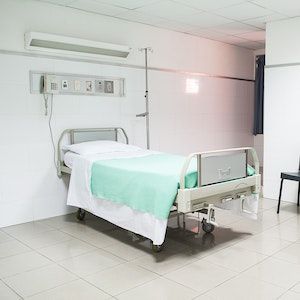Article
Optimal Bed Management In Hospitals May Reduce Influenza Infection Risk
Author(s):
More than 40% of community-acquired and 70% of hospital-acquired influenza inpatients experienced intrahospital bed transfers during their active infection period.

The development of an optimal bed management plan for surges of influenza may be essential to reduce the risk of nosocomial infections and workload strain, particularly for rural and remote facilities.
In a recent study, a team led by Colleen Ma, MBBS, Tamworth Rural Referral Hospital, found no active strategy for influenza containment during high-occupancy periods in New South Wales during peak influenza season in 2016 - 2019.
“Optimal management of nosocomial influenza inpatients should include the occupancy of a maximum of two bed locations during their stay: the first bed assigned on admission (presumably having been diagnosed with a non-influenza-like illness), and the second after they have been moved in light of their influenza diagnosis, and only if required,” Ma wrote.
Reactionary bed management may result in patients being placed into any available bed, thus increasing the need for transfer and the risk of spreading respiratory illness to other patients and staff.
The rural referral hospital in the study had a total of 282 beds providing acute care services to a population of 77,029 with 25.5% of patients aged 60 years or greater. The hospital consisted of an intensive care unit, four acute care wards, and one subacute rehabilitation ward.
Adult inpatients with a diagnosis of either community-acquired influenza (on admission or within 48 hours of admission) or nosocomial influenza (positive swab after 3 days in hospital) were included in the study. According to district guidelines, patients diagnosed with influenza were considered infectious for a period of 7 days.
Retrospective data were collected over peak influenza seasons (July - September) from 2016 - 2019. Two clinical databases tracked influenza cases and bed movements of patients throughout the hospital.
Throughout the study period, a total of 229 patients had a diagnosis of either type A or type B influenza, with 86.9% having community-acquired influenza and 13.1% being nosocomial transmission cases.
Of the 199 patients admitted with community-acquired influenza, more than 40% (n = 85) were transferred from their admission bed during the infectious period. Investigators noted the initial admission of patients from the emergency department bed to a ward bed was not counter as a transfer.
From 30 patients who contracted influenza in hospital, 70% (n = 21) were transferred from one bed to another during the infectious period. Data show some were transferred more than once, with 33% of patients being transferred twice and 7% being transferred three times.
Investigators noted 85 patients with community-acquired influenza were associated with 142 bed transfers. Data show 50% of patients were transferred to another ward and 50% of patients were transferred within the same ward.
“It would be beneficial for rural and remote facilities to develop and implement an organizational bed management strategy that aims to reduce the number of intrafacility bed transfers of patients who have confirmed influenza, especially during the 7-day infectious period,” Ma recommended.
The study, “Rural hospital bed management practices during influenza season,” was published by Rural Remote Health.





